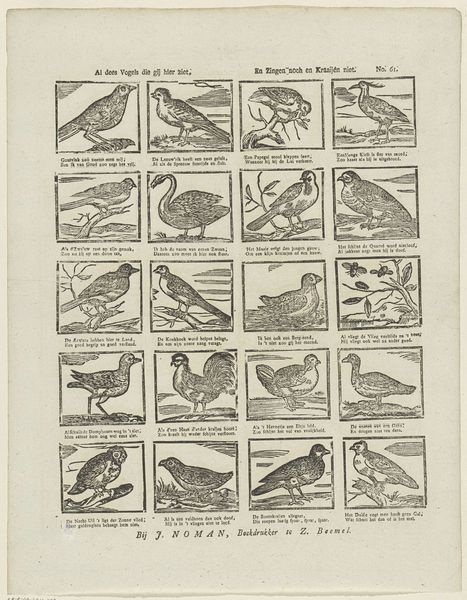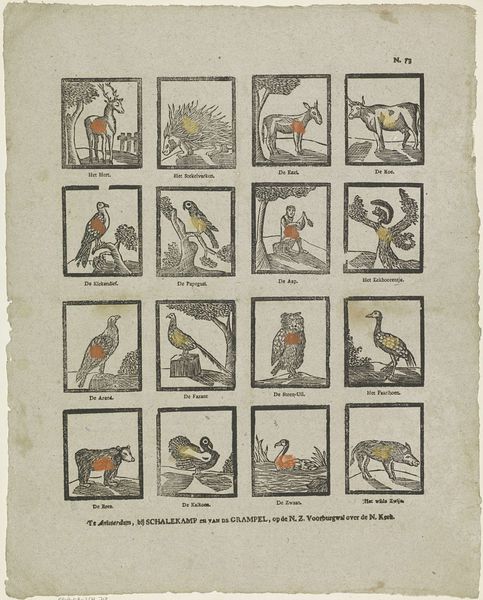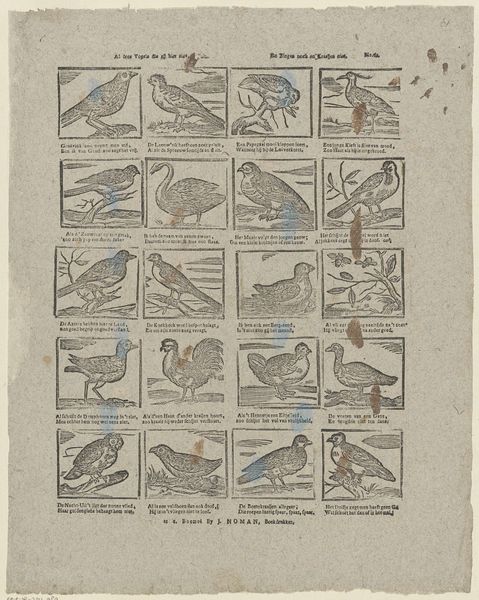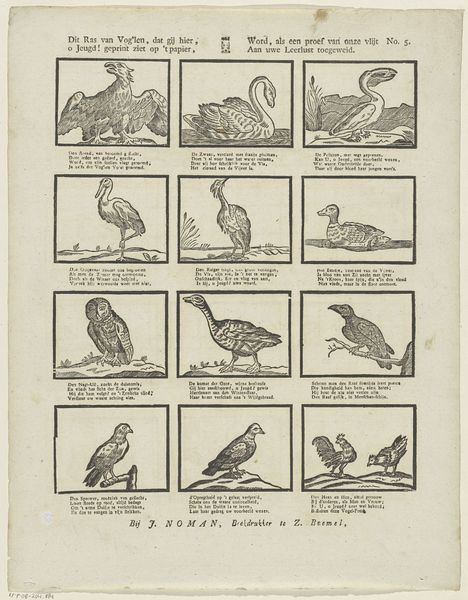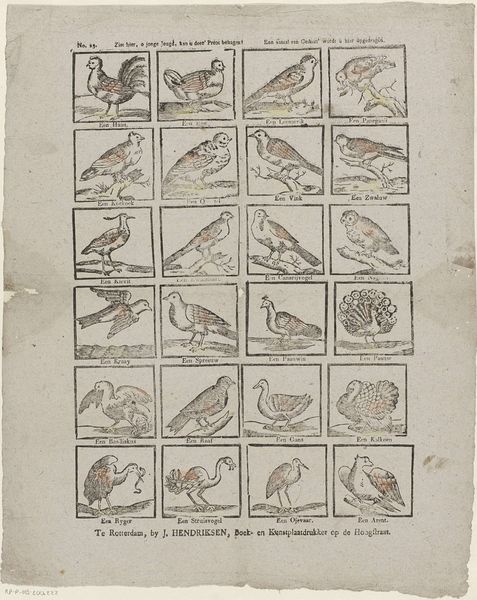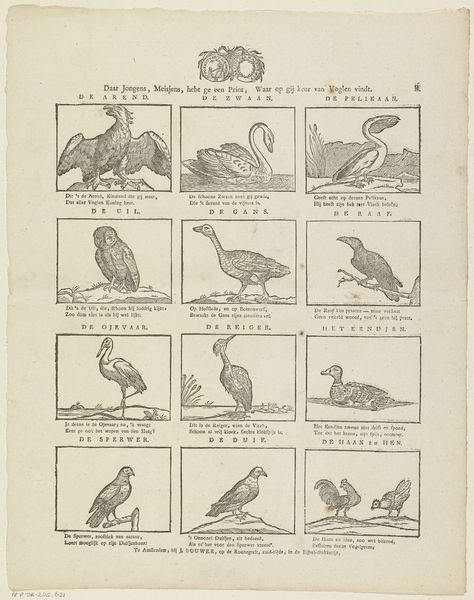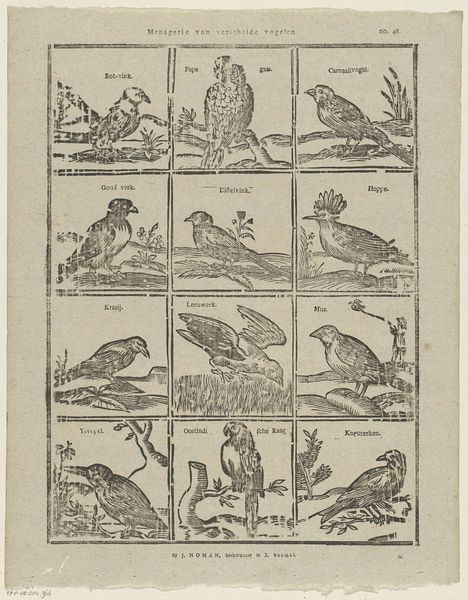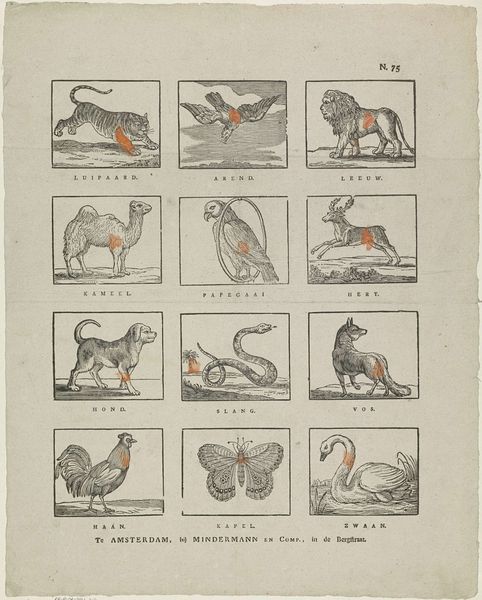
drawing, print, ink, woodcut
#
drawing
#
narrative-art
#
baroque
# print
#
bird
#
figuration
#
ink
#
folk-art
#
woodcut
#
genre-painting
Dimensions: height 429 mm, width 312 mm
Copyright: Rijks Museum: Open Domain
Editor: So, this print, "Dees Vogels zonden/Zullen u niet ligt ontvliegen," was created by Johannes Kannewet sometime between 1725 and 1780. It’s got these almost cartoonish birds, each in their own little square. I find it kind of charming, but also…a bit unsettling. What stories do you think these birds are trying to tell? Curator: Ah, a fascinating piece, brimming with symbolic language! Don't let the seemingly simplistic style fool you. In folk art like this, birds often serve as allegorical stand-ins for human traits. See how each bird is carefully delineated, almost like specimens in a bestiary? Consider each one - the proud rooster, the watchful owl... What do these birds evoke for you? Editor: I guess…stereotypes? The rooster does seem proud, maybe even a little boastful. The owl looks wise, but also aloof, or like it's judging everyone. It is a little like a Medieval bestiary. Curator: Precisely! These aren’t just depictions of birds, they are reflections of societal values and moral lessons, passed down through generations. The phrases below each bird reinforce this; each square is an easily digestible piece of moral instruction, connecting specific human behaviors to corresponding creatures. Editor: That makes sense. So the artist used the established symbolism of these animals to teach a lesson to the viewer. It is an interesting mix of folk art, science, and instruction. I see something different every time I look at it. Curator: Indeed, it is art that instructs but is filled with intriguing symbols, open to renewed appreciation over time.
Comments
No comments
Be the first to comment and join the conversation on the ultimate creative platform.


